Aerospace Industry
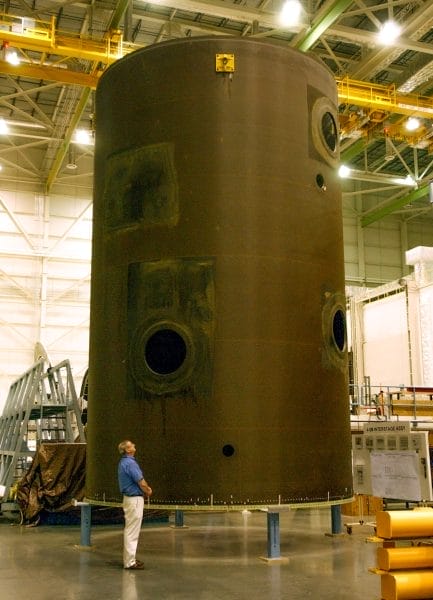 Delta IV Rocket
Aerospace is one of the most significant industries in Alabama and, along with the automotive and biotechnology industries, is a key driver of the state’s economy, according to economic development officials. Aerospace accounts for thousands of jobs and billions of dollars injected into the economy and also is responsible for the creation of numerous jobs in other sectors. The aerospace industry generally provide high-paying jobs as compared with other industries, boosting the economies in several areas of the state.
Delta IV Rocket
Aerospace is one of the most significant industries in Alabama and, along with the automotive and biotechnology industries, is a key driver of the state’s economy, according to economic development officials. Aerospace accounts for thousands of jobs and billions of dollars injected into the economy and also is responsible for the creation of numerous jobs in other sectors. The aerospace industry generally provide high-paying jobs as compared with other industries, boosting the economies in several areas of the state.
Anchored by Marshall Space Flight Center and Redstone Arsenal in Huntsville, Alabama’s aerospace industry is generally grouped into four major sectors: space; defense; aviation; and maintenance, repair, and overhaul. The majority of aerospace workers are concentrated in five regions encompassing 14 counties—the greater Huntsville area (including Madison, Morgan, and Cullman Counties); southeastern Alabama (Dale, Pike, Coffee, and Houston Counties); the Montgomery area (Montgomery and Dallas Counties); central Alabama (Jefferson, Calhoun, and Talladega Counties); and Mobile (Mobile and Baldwin Counties). Ninety-nine percent of aerospace industry employment in Alabama occurs in these areas.
Origins
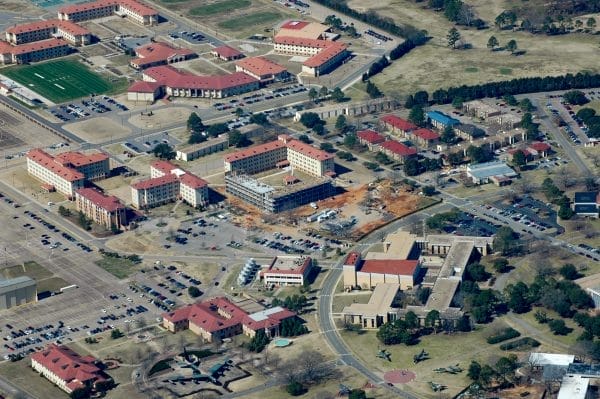 Maxwell Air Force Base
Alabama’s aerospace lineage can be traced to the early years of both human-powered flight and space exploration. Brothers Orville and Wilbur Wright are generally given credit with inventing and constructing the world’s first successful airplane and making the first controlled, powered, and sustained heavier-than-air human flight on December 17, 1903. Only seven years later, the Wright brothers established in Montgomery the first civilian flying school in the United States. By the 1920s, Montgomery had become an important link in the airmail service network that crisscrossed the nation. In 1931, the Army Air Corps Tactical School, the nation’s center for professional military education, moved its operations to Maxwell-Gunter Air Force Base, outside Montgomery. Currently, Maxwell-Gunter continues to provide education leadership for the Air Force and other branches of the U.S. armed forces.
Maxwell Air Force Base
Alabama’s aerospace lineage can be traced to the early years of both human-powered flight and space exploration. Brothers Orville and Wilbur Wright are generally given credit with inventing and constructing the world’s first successful airplane and making the first controlled, powered, and sustained heavier-than-air human flight on December 17, 1903. Only seven years later, the Wright brothers established in Montgomery the first civilian flying school in the United States. By the 1920s, Montgomery had become an important link in the airmail service network that crisscrossed the nation. In 1931, the Army Air Corps Tactical School, the nation’s center for professional military education, moved its operations to Maxwell-Gunter Air Force Base, outside Montgomery. Currently, Maxwell-Gunter continues to provide education leadership for the Air Force and other branches of the U.S. armed forces.
During World War II, the U.S. Army established a munitions plant on the outskirts of Huntsville at Redstone Arsenal. The arsenal, declared surplus after the war ended, was scheduled to be auctioned in the late 1940s. But in 1950, the U.S. Army moved rocketry pioneer Wernher von Braun and his team of German scientists to Redstone to develop missiles for national defense. Von Braun and his team transferred from the U.S. Army to the National Aeronautics and Space Administration’s (NASA) Marshall Space Flight Center, established in July 1960 at Redstone. There, von Braun and other scientists developed the space flight systems that within 10 years would carry astronauts to the Moon and back. Redstone Arsenal continues to be the headquarters for the Army’s efforts at missile research and development, as well as aviation technology. Marshall Space Flight Center is currently developing the next generation of space vehicles for America’s space program. Both facilities played a crucial role in creating the broad and robust aerospace industry in the state of Alabama.
Aerospace Clusters
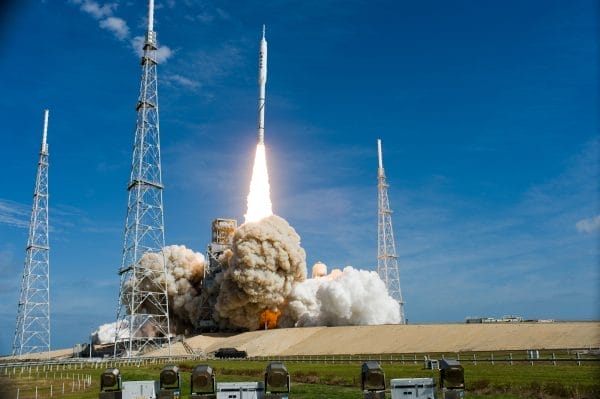 Ares I-X Rocket Test
As the focal point of the industry’s space sector in the state, Marshall Space Flight Center is one of NASA’s largest field centers, with a budget of nearly $3 billion, a significant portion of the agency’s total budget. The center has a direct role in managing space transportation systems and has been responsible for a number of achievements in America’s space program: the development of the Jupiter-Redstone rocket that launched Explorer I, the nation’s first satellite in space; and the development of the Saturn V, the world’s most powerful transportation vehicle. The Saturn V rocket powered the astronauts to the Moon for several missions. Other achievements include the lunar roving vehicle; the engines that power the space shuttle vehicles; the development of Skylab, the first space station; and development of the laboratory and habitation modules for the International Space Station. Engineers and scientists in Huntsville then began developing the next generation of space launch vehicles, the Ares I and Ares V, but the programs were cancelled before they were put into use. They have been replaced by the Space Launch System series of rockets, with Marshall serving as the structural integrity testing facility.
Ares I-X Rocket Test
As the focal point of the industry’s space sector in the state, Marshall Space Flight Center is one of NASA’s largest field centers, with a budget of nearly $3 billion, a significant portion of the agency’s total budget. The center has a direct role in managing space transportation systems and has been responsible for a number of achievements in America’s space program: the development of the Jupiter-Redstone rocket that launched Explorer I, the nation’s first satellite in space; and the development of the Saturn V, the world’s most powerful transportation vehicle. The Saturn V rocket powered the astronauts to the Moon for several missions. Other achievements include the lunar roving vehicle; the engines that power the space shuttle vehicles; the development of Skylab, the first space station; and development of the laboratory and habitation modules for the International Space Station. Engineers and scientists in Huntsville then began developing the next generation of space launch vehicles, the Ares I and Ares V, but the programs were cancelled before they were put into use. They have been replaced by the Space Launch System series of rockets, with Marshall serving as the structural integrity testing facility.
Alabama’s aerospace defense cluster ranks 9th nationally and second among states in the South for Department of Defense contracts, with more than $16 billion in contracts for fiscal year 2019. The defense cluster is more geographically diverse than the space cluster, with workforce concentrations around Fort Novosel near the Dothan area in southeast Alabama, Maxwell-Gunter Air Force Base in the Montgomery area, and Redstone Arsenal near Huntsville.
The aviation cluster is spread throughout Alabama, but most companies are concentrated in the southeastern part of the state. GKN Aerospace has major facilities in Tallassee, and Kelly Aerospace has an operation in Montgomery. Teledyne Continental has a large concentration of workers at a facility in the Mobile area that manufactures engines and components for the aviation industry.
Maintenance, repair, and overhaul (MRO) firms are largely centered in the Dothan and Birmingham area, with some smaller companies in other areas of Alabama, including Mobile. Thousands of Alabamians are employed in the MRO industry.
Geographic Concentrations
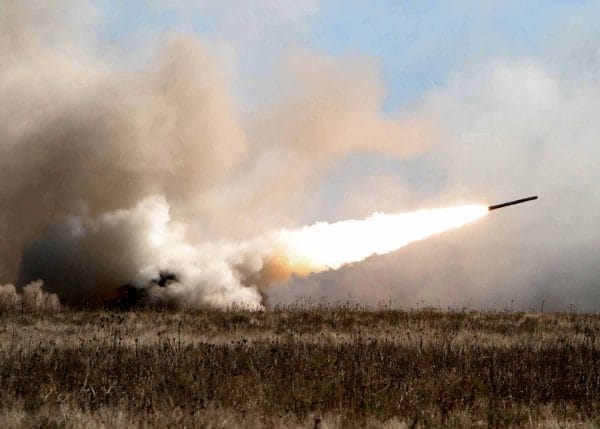 High Mobility Artillery Rocket System
Both the U.S. Army presence at Redstone Arsenal and the NASA presence at Marshall Space Flight Center have established the greater Huntsville area as Alabama’s top geographic region in terms of aerospace employment, with nearly 80,000 workers. Redstone serves as the Army’s national center for missile defense and hosts the headquarters of the Space and Missile Defense Command. The military installation is also headquarters for the Army’s Aviation and Missile Command, as well as the Missile Research Development and Engineering Center.
High Mobility Artillery Rocket System
Both the U.S. Army presence at Redstone Arsenal and the NASA presence at Marshall Space Flight Center have established the greater Huntsville area as Alabama’s top geographic region in terms of aerospace employment, with nearly 80,000 workers. Redstone serves as the Army’s national center for missile defense and hosts the headquarters of the Space and Missile Defense Command. The military installation is also headquarters for the Army’s Aviation and Missile Command, as well as the Missile Research Development and Engineering Center.
Huntsville is also the site of the National Space Science and Technology Center (NSSTC), a federal-state partnership between NASA and Alabama’s research universities: the University of Alabama in Huntsville (UAH), Alabama A&M University, Auburn University, the University of Alabama, the University of Alabama at Birmingham, and the University of South Alabama. Headquartered on the campus of UAH, the NSSTC conducts and communicates research and development critical to NASA’s mission. It also educates the next generation of scientists and engineers for space-based research and uses the platform of space to better understand the Earth and space environment and increase knowledge of materials and processes.
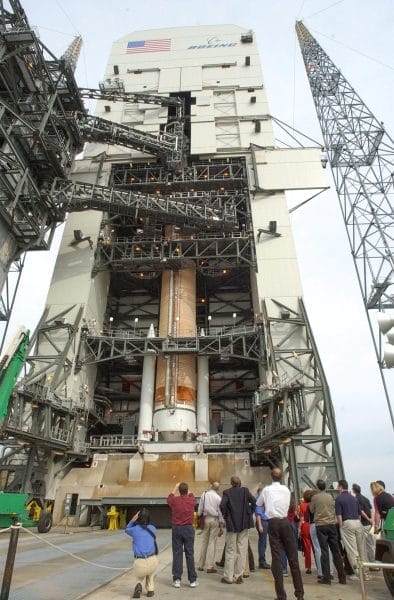 Delta IV Rocket
As a result of the size and responsibility of the federal agencies located at Redstone Arsenal, many leading aerospace companies also have established a major presence in the greater Huntsville area, including Boeing, Northrop Grumman, Lockheed Martin, and Raytheon. Many of these companies are centered at Cummings Research Park, near the university. In addition to a heavy presence in Huntsville, Boeing manufactures its Delta IV rocket in nearby Decatur. This concentration of federal research activity has also led to the creation of a number of highly successful Huntsville-based corporations, including Dynetics, Teledyne Brown Engineering, Sanmina, and COLSA. These companies provide advanced work in analysis, design, and development through engineering and information technology support, such as hardware and software development.
Delta IV Rocket
As a result of the size and responsibility of the federal agencies located at Redstone Arsenal, many leading aerospace companies also have established a major presence in the greater Huntsville area, including Boeing, Northrop Grumman, Lockheed Martin, and Raytheon. Many of these companies are centered at Cummings Research Park, near the university. In addition to a heavy presence in Huntsville, Boeing manufactures its Delta IV rocket in nearby Decatur. This concentration of federal research activity has also led to the creation of a number of highly successful Huntsville-based corporations, including Dynetics, Teledyne Brown Engineering, Sanmina, and COLSA. These companies provide advanced work in analysis, design, and development through engineering and information technology support, such as hardware and software development.
 Helicopter Maintenance at Fort Novosel
Located in the Dothan area, Fort Novosel’s Army aviation training program has resulted in the second largest concentration of aerospace workers in the state, with more than 16,250 federal and private-sector jobs, about 22 percent of the state’s total, according to the AAIA 2003 survey. In 1955, the U.S. Army established a facility at then-Fort Rucker to train military, civilian, and international personnel in aviation-related and leadership skills to prepare Army aviation for the future; it is also the largest helicopter training installation in the world and is home to numerous other organizations primarily focused on U.S. Army aviation.
Helicopter Maintenance at Fort Novosel
Located in the Dothan area, Fort Novosel’s Army aviation training program has resulted in the second largest concentration of aerospace workers in the state, with more than 16,250 federal and private-sector jobs, about 22 percent of the state’s total, according to the AAIA 2003 survey. In 1955, the U.S. Army established a facility at then-Fort Rucker to train military, civilian, and international personnel in aviation-related and leadership skills to prepare Army aviation for the future; it is also the largest helicopter training installation in the world and is home to numerous other organizations primarily focused on U.S. Army aviation.
Montgomery has the third highest concentration of aerospace workers, with approximately 13,000, or about 16.6 percent of the state’s total aerospace workforce. The AAIA survey reports that more than 9,000 jobs are directly tied to Maxwell-Gunter Air Force Base, and another 2,600 jobs are related to information technology. Maxwell-Gunter is headquarters to Air University, the Air Force center for professional military education and a major component of Air Education and Training Command. The university’s Professional Military Education programs train Air Force personnel in the capabilities of air and space power and their role in national security. These programs focus on the knowledge and abilities needed to develop, employ, command, and support air and space power at the highest levels. Specialized Professional Continuing Education programs provide scientific, technological, managerial, and other professional expertise to meet the needs of the Air Force.
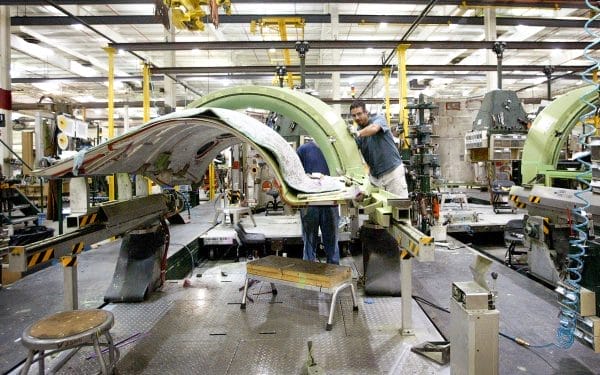 Aircraft Maintenance in Foley
The Mobile area ranks fourth in aerospace employment, according to the 2003 AAIA industry survey, which found that nearly 2,350 jobs were associated with the aerospace industry. ST Mobile Aerospace Engineering is one of the region’s largest aerospace employers, with approximately 1,200 workers involved in MRO activities on wide-body and narrow-body aircraft. In 2005, European Aeronautic Defense and Space Company (EADS), the world’s second largest aerospace and defense company, announced that it plans to build an engineering center in the Mobile area that will eventually be co-located with a production facility to build refueling tankers.
Aircraft Maintenance in Foley
The Mobile area ranks fourth in aerospace employment, according to the 2003 AAIA industry survey, which found that nearly 2,350 jobs were associated with the aerospace industry. ST Mobile Aerospace Engineering is one of the region’s largest aerospace employers, with approximately 1,200 workers involved in MRO activities on wide-body and narrow-body aircraft. In 2005, European Aeronautic Defense and Space Company (EADS), the world’s second largest aerospace and defense company, announced that it plans to build an engineering center in the Mobile area that will eventually be co-located with a production facility to build refueling tankers.
Nearly 2,100 workers are employed in the fifth geographic concentration of aerospace workers in Calhoun, Jefferson, and Talladega counties. Most of those workers (1,350) are employed in aircraft MRO. The largest employer in that region, Alabama Aircraft Industries, provides a full range of aviation maintenance and modification services for both U.S. and foreign military customers.
Alabama has long been associated with the nation’s aerospace industry and is a national leader among the states for research, development and manufacturing for this industrial sector, which involves space exploration, missile defense, and military and commercial aviation.
The industry’s high wages attract many Alabama workers, and the federal government and private businesses that support those agencies provide strong economic impact on Alabama’s economy. The future of aerospace continues to look bright as federal spending on missile defense as well as space exploration remains strong, and Alabama continues to be a prime location for manufacturers.



